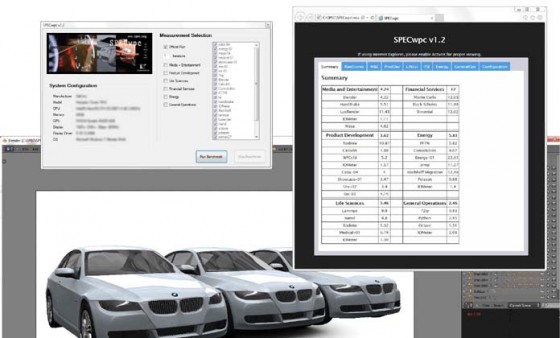More than 30 potential workload scenarios are tested, including CPU, graphics, and memory bandwidth.
The SPEC Workstation Performance Characterization Group (SPECwpc) has released an updated benchmark that extends performance measurement from physical to virtualized workstation configurations.

The new SPECwpc V1.2 benchmark measures all key aspects of workstation performance based on diverse professional applications.
The ability to measure comprehensive performance for virtualized workstations comes at a time when the market is in its early growing stages, according to Jon Peddie, president of Jon Peddie Research.
“Our conservative estimates project workstation-capable virtual desktop installations increasing from essentially zero two years ago to nearly 350,000 clients by 2018,” says Peddie. “The newest version of the SPECwpc benchmark gives users and vendors a proven tool to evaluate virtualized performance based on leading professional applications.”
“Desktop virtualization is an important option for a wide range of professionals using popular workstation applications,” says Tom Fisher, SPECwpc chair. “The latest version of SPECwpc software provides a comprehensive picture of performance for both physical and virtualized workstations.”
The SPECwpc V1.2 benchmark supports various hypervisors for creating and running virtual machines. It also includes graphical user interface (GUI) improvements and new automation for results reporting.
The new benchmark tests more than 30 workloads in CPU, graphics, I/O and memory bandwidth. The tests are divided by application categories that include media and entertainment (3D animation, rendering), product development (CAD/CAM/CAE), life sciences (medical, molecular), financial services, energy and general operations. Individual scores are generated for each test and a composite score for each category.
The benchmark does not require the full application and associated licensing to be installed on the system under test, simplifying set-up, running and results reporting.
The SPECwpc V1.2 benchmark runs under the 64-bit versions of Microsoft Windows 7 SP1 and Windows 8.1 SP1.
The SPECwpc V1.2 benchmark is available for immediate download under a two-tiered pricing structure: free for non-commercial users and $5,000 for commercial entities. Commercial entities are defined as organizations using the benchmark for the purpose of marketing, developing, testing, consulting for and/or selling computers, computer services, graphics devices, drivers or other systems in the computer marketplace.
Members of the SPECwpc project group include AMD, Dell, Fujitsu, HP, Intel, Lenovo, Micron, Nvidia and VMware.





